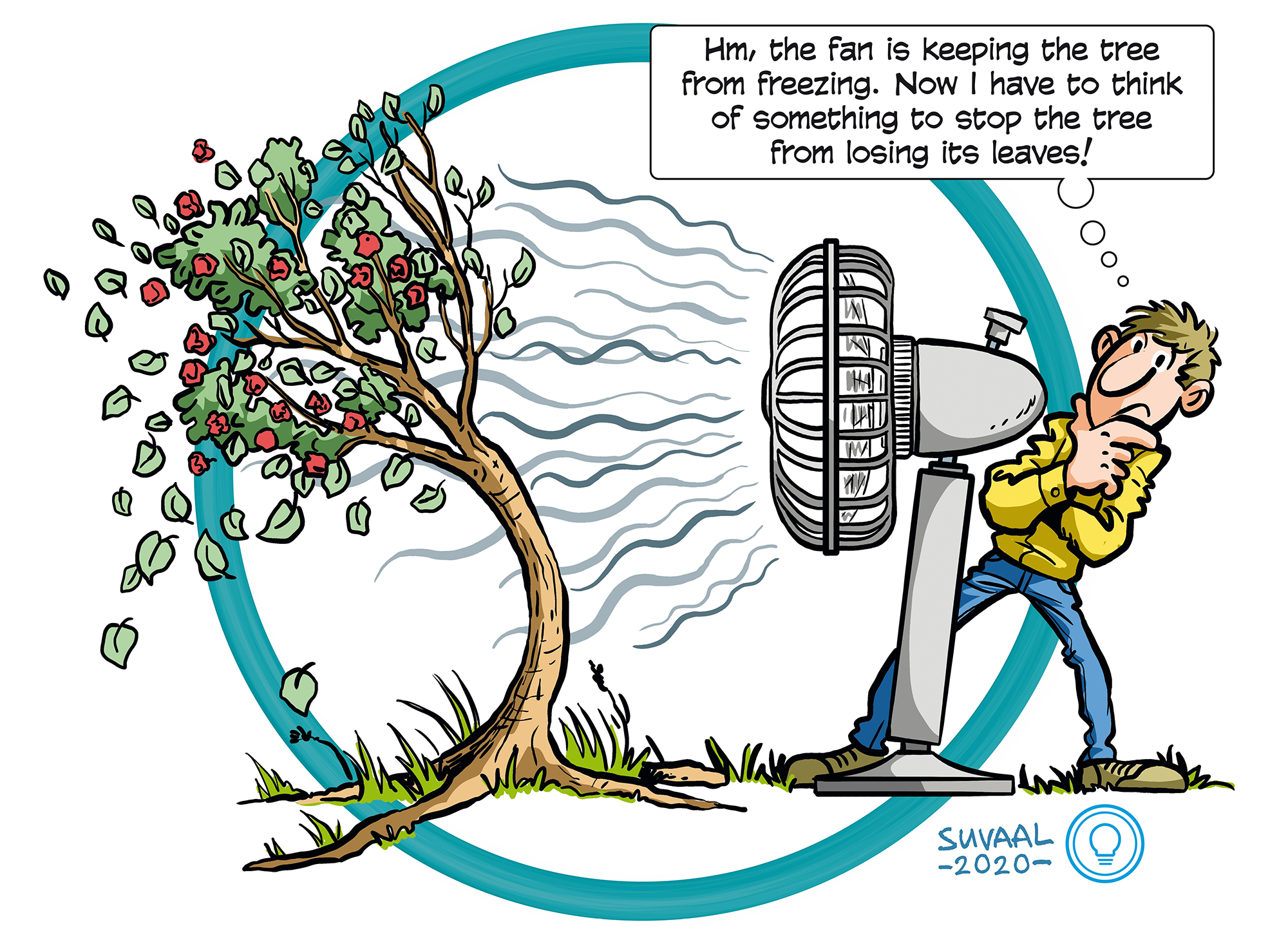Preventing fruit from frost damage
Themes: Life Science & Health, Software technology & Intelligent Systems


A TRL is a measure to indicate the matureness of a developing technology. When an innovative idea is discovered it is often not directly suitable for application. Usually such novel idea is subjected to further experimentation, testing and prototyping before it can be implemented. The image below shows how to read TRL’s to categorise the innovative ideas.
Summary of the project
When it freezes in spring, sprinkling water over fruit trees is a commonly used method for protecting the fragile flower buds in most of the Netherlands. In some case, this method is successful. Unfortunately, it is costly and has an impact on farmers families, which have to stay awake all night. Besides, this method is limited by the ground water level and quality (not to salt) and cannot be applied everywhere. Other strategies to prevent fruit frost make use of e.g. fire candles throughout the field or use heat canons to locally enhance the temperatures. However, little is known about the effectiveness of each of these methods. By linking numeric modelling with field experiments the researcher aims to assess the effectiveness of the various known frost preventing measures.
Field experiments with huge ventilators (10m height) in an orchard have shown that they are very efficient in mixing colder and warmer air layers. Through a spider web of glass fibers in the field they could map the temperature response due to ventilator operation. The numerical models allowed the researcher to determine which interventions – rotation speed or location - increased the effectiveness of the ventilator. Subsequently, the researchers are also developing an app which could map the temperature field, real time, based on tiny autonomous sensors that are located in the field. Such an app is suggested to support farmers in making decisions on when and where to initiate frost prevention measures.
What's next?
The next step for this research is to create an Internet of Plants. Through small sensors in the field the microclimate for each plant can be determined. Based on this data the farmers can be equipped with a tool which can generate a 3D image of the temperature of the field, for both extreme cold or warm weather. This would make the traditional weather station redundant. Another step for the design of the ventilators would be to take environmental factors into account. By doing so the ventilators could become smaller and producing less noise so that a construction permit is no longer required.
prof. dr. ir. Bas van de Wiel
dr. ir. Marie-Claire ten Veldhuis
prof. dr. Koki Makinwa
dr. Qinwen Fan
Vincent Heusinkveld MSc
Climate Institute
Faculties involved
- CEG
